
PXIe Source Meter Unit
S0342C
4-Channel PXIe Precision SMU
The S0342C Precision source meter is compact and cost-effective 4-Channel PXIe Source/Measure Units (SMUs) with the capability to source and measure both voltage and current. They have Maximum ±30 V, ± 500 mA DC/Pulsed sourcing capability, supports conventional SMU SCPI commands for easy test code migration. Support Most of standards PXIe chassis, support multi-card synchronization, these features improve efficiency and lower the cost of ownership when integrating the SMUs into systems for production test.
Feature

Easy to expand
Single channel standard pxie precision power supply, easy to expand
Large range
Range: ± 30 V, ± 500 mA (DC/Pulsed)
High resolution
The minimum measurement resolution can reach 100 pA/100 μV
High sampling rate
Up to 500K ADC sampling rateFunctions and advantages
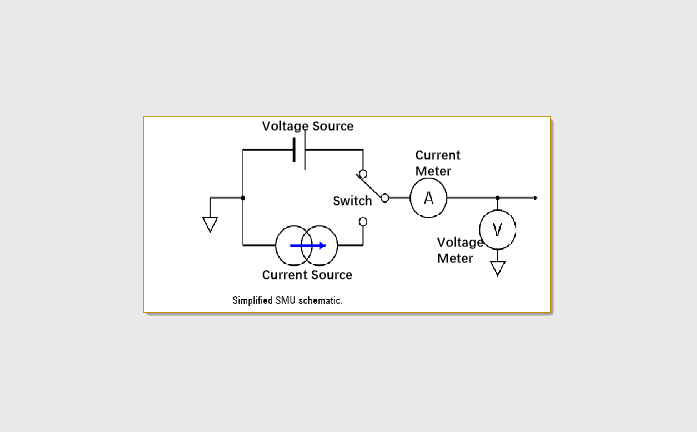
(5) function in one body
Voltage source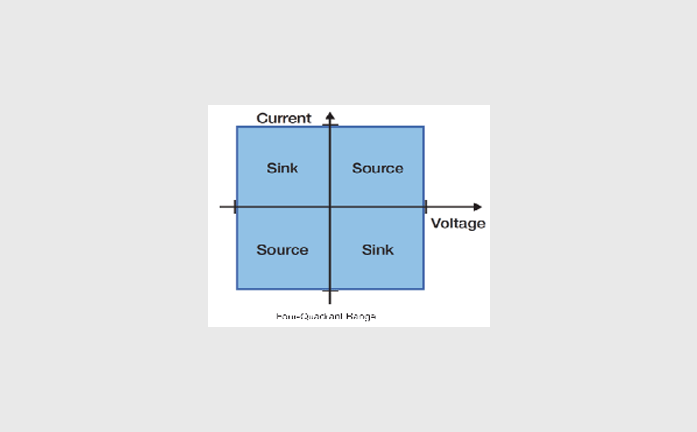
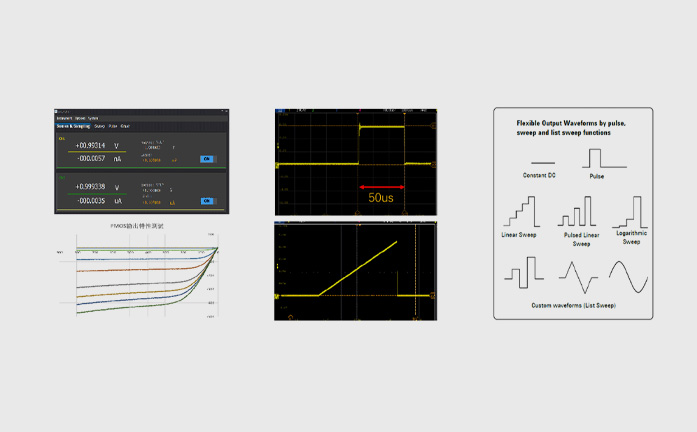
Can test various equipment
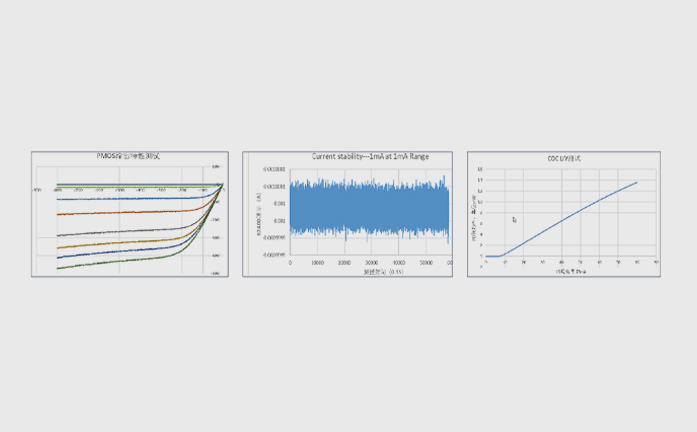
Capture more measurement data
♦ 6.5-digit resolution: Enjoy best-in-class 6.5-digit sourcing and measurement resolution;
Rich scanning function
Voltage Source specifications
|
|
Range | Programming resolution |
Accuracy (1 Year) ± (% reading+ offset) |
Typical Noise (RMS) 0.1 Hz-10Hz |
| ±30 V | 1mV | 0.03%+4 mV | 1000 μV | |
| ±6 V | 200 μV | 0.03%+1 mV | 100 μV | |
| Temperature coefficient | ±(0.15 × accuracy)/°C (0℃-18℃,28℃-50℃) | |||
| Channel1 | CH0 to CH3 | |||
| Output power | 3 W per channel and 6 W total | |||
| Settling time | <200us (typical) | |||
| Overshoot | <±0.1% (Typical.Normal.Step is 10 % to 90 % range, full range,resistive load) | |||
| Noise 10Hz-20MHz | 6 V voltage source, 0.5 A resistive load, <3 mVrms | |||
1、Channels are isolated from earth ground but share a common LO.
Current Source specifications
|
Current Programming accuracy |
Range | Programming resolution |
Accuracy (1 Year) ± (% reading+ offset) |
Typical Noise (RMS) 0.1 Hz-10Hz |
| ±500 mA1 | 20 μA | 0.05% + 100 μA + Vo*25 μA | 10 μA | |
| ±100 mA | 4 μA | 0.05% + 10 μA+ Vo*5 μA | 1 μA | |
| ±10 mA | 400 nA | 0.05% + 5 μA + Vo*500 nA | 100 nA | |
| ±1 mA | 40 nA | 0.05% + 500 nA + Vo*50 nA | 10 nA | |
| ±100 μA | 4 nA | 0.05% + 50 nA + Vo*5 nA | 1 nA | |
| ±10 μA | 400 pA | 0.05% + 20 nA + Vo*500 pA | 150 pA | |
| Temperature coefficient | ±(0.15 × accuracy)/°C (0℃-18℃,28℃-50℃) | |||
| Channel2 | CH0 to CH3 | |||
| Output power | 3 W per channel and 6 W total | |||
| Settling time | <300 μs (typical) | |||
| Overshoot | <±0.1% (Typical.Normal.Step is 10 % to 90 % range, full range, resistive load) | |||
Voltage Measurement specifications
|
|
Range | Measurement resolution |
Accuracy (1 Year) ± (% reading+ offset) |
|
| ±30 V | 300 μV | 0.03%+4 mV | ||
| ±6 V | 60 μV | 0.03%+1 mV | ||
| Temperature coefficient | ±(0.15 × accuracy)/°C (0℃-18℃,28℃-50℃) | |||
Current Measurement specifications
|
|
Range | Measurement resolution |
Accuracy (1 Year) ± (% reading+ offset) |
|
| ±500 mA1 | 10 μA | 0.05% + 100 μA + Vo*25 μA | ||
| ±100 mA | 1 μA | 0.05% + 10 μA+ Vo*5 μA | ||
| ±10 mA | 100 nA | 0.05% + 5 μA + Vo*500 nA | ||
| ±1 mA | 10 nA | 0.05% + 500 nA + Vo*50 nA | ||
| ±100 μA | 1 nA | 0.05% + 50 nA + Vo*5 nA | ||
| ±10 μA | 100 pA | 0.05% + 20 nA + Vo*500 pA | ||
| Temperature coefficient | ±(0.15 × accuracy)/°C (0℃-18℃,28℃-50℃) | |||
1、500mA range is available only for 6V voltage range
I-V Out capability
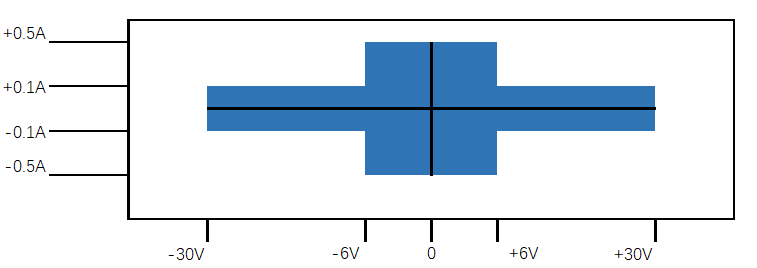
Typical output settling time
|
Source |
Range |
Output settling time |
Condition |
||
|
Fast1,2 |
Normal1 |
Slow1 |
|||
|
Voltage |
30 V |
<400 μs |
<1.5 ms |
<2.8 ms |
Time required to reach within 0.1 % of final value at open load condition. Step is 10 % to 90 % range |
|
6 V |
<250 μs |
<780 μs |
<2.8 ms |
||
|
Current |
±500 mA |
<50 μs |
<330 μs |
<2.5 ms |
Time required to reach within 0.1 % of final value at short condition. Step is 10 % to 90 % range |
|
±100 mA |
<50 μs |
<270 μs |
<2.5 ms |
||
|
±10 mA |
<50 μs |
<270 μs |
<2.5 ms |
||
|
±1 mA |
<100 μs |
<290 μs |
<2.5 ms |
||
|
±100 μA |
<150 μs |
<5 ms |
<2.5 ms |
||
|
±10 μA |
<250 μs |
<3 ms |
<2.5 ms |
||
1,Output transition speed:Fast, Normal, Slow。
2, Slow mode is recommended for overshoot sensitive equipment, Fast mode may have overshoot on output in some condition
文档下载
 DS70000数据手册
DS70000数据手册  DS70000数据手册
DS70000数据手册  DS70000数据手册
DS70000数据手册  DS70000数据手册
DS70000数据手册 Democode
 DS70000数据手册
DS70000数据手册  DS70000数据手册
DS70000数据手册  DS70000数据手册
DS70000数据手册  DS70000数据手册
DS70000数据手册 Similar recommendation
Service hotline
Follow
Name
Email verfication code
Phone
Password
Confirm Password
e-mail address
Email verification code
New Password
Confirm Password